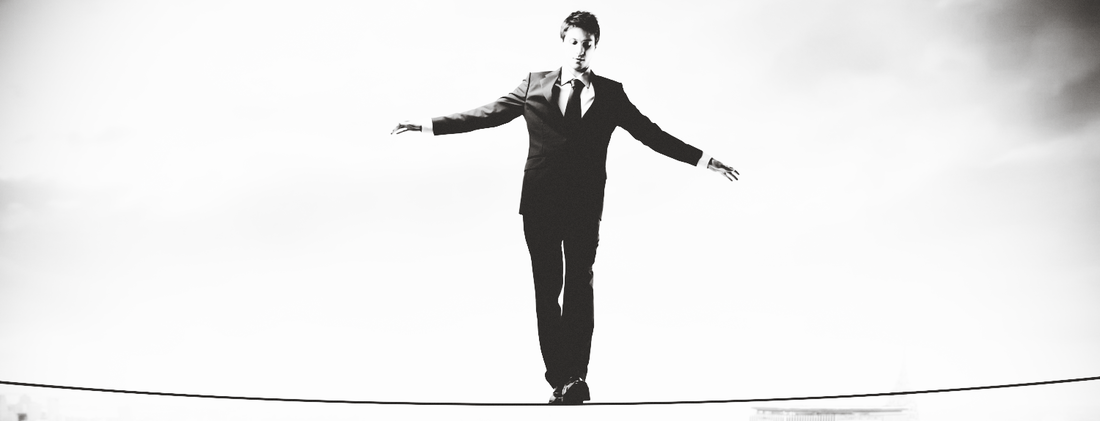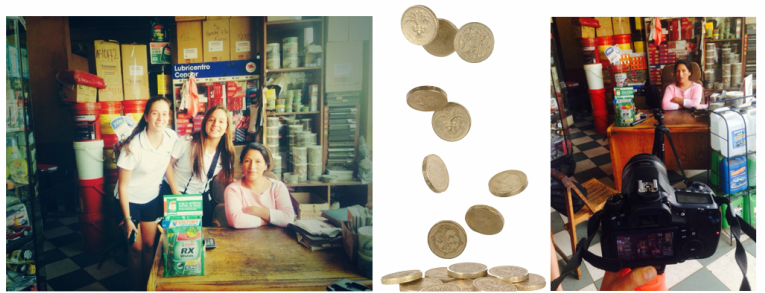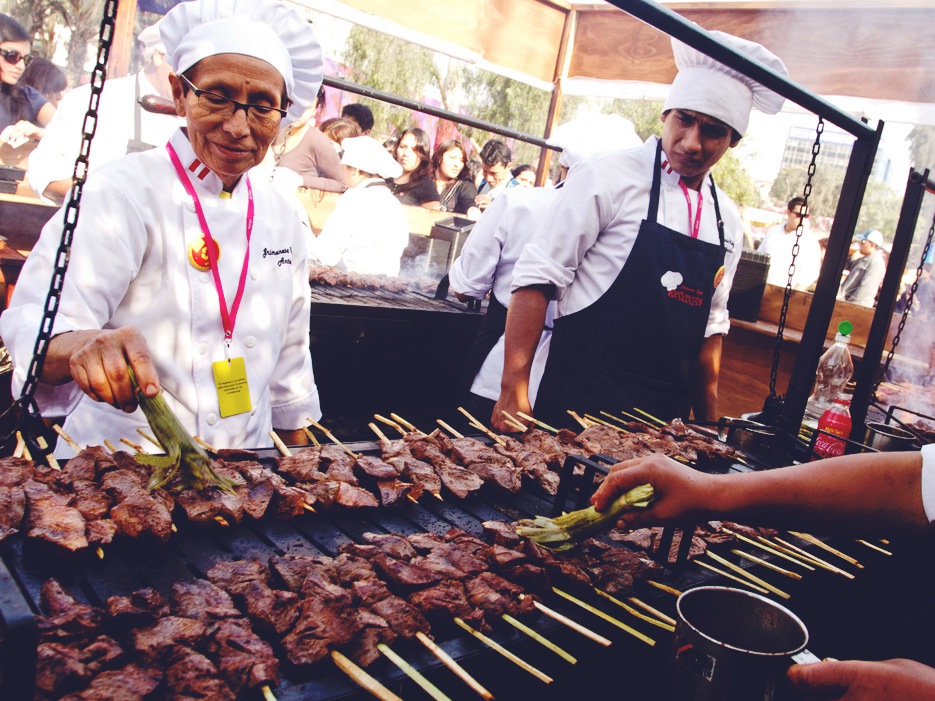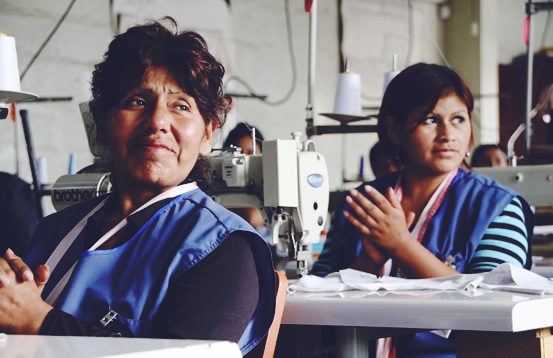|
EVERYDAY we are posed with RISKS. There is a risk that while you cross the road, a car will flash out of nowhere, there is a risk that if you cut your hair, you won't like it, and there is a risk that if you order sushi, the fish is bad. No matter what we do, there is a risk in every choice we make. However, if we STRONGLY believe the good outcome is worth the RISK, then we should EMBRACE it. In microfinance, there is a risk in every loan provided to a micro client. There is risk that even the best paying client won't pay you back, because there is always a chance he will get sick or that something happens in the business or family, and he has no money to pay. But if nothing does wrong, then you've made quite the deal. Therefore, financial institutions take these chances, because just like the bad outcome can mean a loss of money, if the client does pay back the loan it's a SUPER win for them, especially if they are in the RISKIEST category. All clients are categorized into four different risk groups, this allows the bank or institution to determine their interest rates and eligibility for the different credits. The riskiest clients have the highest interest rates because they have the highest probability of default; therefore, the bank needs to secure some money, and thus poses HIGH INTEREST RATES on these types of clients. Even though, informal business owners are risky clients, financial institutions are willing to make these colocations of money because they know that if the client pays the loan will be very profitable. This is why many financial institutions, like Banco Financiero, are working strategies to target the most RISKY sector of the economy: the small and informal business. Usually, when banks or any financial institution want to give a loan, they have to understand how the business of the client works, and most importantly understand how much they sell and how much money they make to see if the business if PROFITABLE. So, in order to determine this, institutions ask clients to supply them with balance sheets, invoices, or tickets that demonstrate the things mentioned previously. With this information on hand, banks are able to determine the loans that suit their client financially; a loan that allows them to buy what they need, but at the same time is in their paying range. Banks build CLOSE relationships with their clients and advise them with good financial decisions, so that they don't FALL into debt. But despite their efforts to help clients payback with no trouble, they also OVERWHELM them with financial opportunities, which the clients end up taking because they are desperate to ascend from social class. In the past few years, there has been a lot of PREDATORY LENDING, which has not only FEED debt to many individuals, but has also caused some financial institutions to fall apart (like Mi Banco). Despite the RISK taken with every client, these new types of credits offered to Peruvians are giving the people--of the lowest sector of the economy--an OPPORTUNITY to flourish and accomplish their dreams. Research, has found that Peruvians have some sort of entrepreneurial spirit in their DNA. Peruvians have an insane DRIVE to survive, to be creative, and thus be entrepreneurial to make their dreams reality. Additionally, it has also been found that the Peruvian females are one of the most entrepreneurial women in the world, and they are also the best paying gender as they feel responsibility to take care of their families and the work hard to prevent falling into debt. Currently, the middle class has extended because the lower sector has been given more CHANCES. Furthermore, even though taking risks is profitable for a bank, they also need to establish some LIMITS, so they don't go broke. Therefore, financial models have been created to determine the probability of default, level of risk, each individual possess, and thus determine if they will be rejected or granted the loan. Nevertheless, risk is not only determined through mathematical equations, nothing replaces a HUMAN CONVERSATION and RELATIONSHIP. A very important part of risk is also determined when the collaborator meets the client. Many times, these people can have a hard financial history, but are extremely hard working and trustworthy, and in these special cases the numbers aren't the defining factor. BIG risks come with BAD consequences, but also GREAT benefits. It's a matter of knowing how to measure this risks, and knowing exactly what you want that makes the outcome WORTHWHILE. Two years ago I took a huge risk in my education path, instead of following the revered and recognized IB Diploma I decided to take a risk and do the Innovation Academy. Even though, the outcome of college was UNCERTAIN, I was determined that the experience, skills, knowledge, and opportunities I was going to have in the IA were worth the risk. It has been two years and the results have been outstanding. I've found who I am, I've embarked myself in the road to the carear I want to purse, I've made great friends, had plenty of real world experience, and grown as a learner and person. All because I measured my risk and knew exactly what I wanted to get from my decision. The same happens in a loan, the outcome is clear, and the risks are measured in order to control the probability of default. Just like people, companies have to take risks to grow out of their confront zone, but they also have to do it moderately.
4 Comments
Carolina Ferreyros
4/20/2015 09:41:22 am
Nice post Drew! I love the beginning of your post, where you say that everything we do, from eating to getting a haircut and crossing the street, are risks we take! I also love how you go from talking about microfinancing and how seamlessly you flow into Peruvians and their drive to become successful entrepeneurs and then zooming in on women. Great way to tie everything together at the end, and taking it to a more personal level talking about making your decision to join the IA instead of doing the IB. Like always, your media is purposeful and I really like how you play with important words and phrases by making them bigger and making them yellow. One thing that I could recommend, is defining what "microfinance" and "micro clients" are for those readers who aren't familiar with the terms. Good job Drew!
Reply
Andrea H
5/3/2015 04:54:14 am
Thank you F for your comment! I also appreciate the time you spend giving me feedback :) I will make sure to define these terms the next time! thanks f
Reply
Corey Topf
4/22/2015 09:28:30 am
Rue! Cool post, and what you're learning at Banco Financiero is relevant far beyond finance. Your final paragraph highlights how universal risk management is; it can be applied to most situations. Selecting a certain university, choosing what kind of car to by, or even which sushi restaurant to go to--they all involve some sort of risk and some type of return. And like F said, the comparison with the IA is an excellent way to connect it to something personal!
Reply
Andrea H
5/3/2015 04:55:39 am
I know Corey it's amazing, the bank they even have an area called risks, all they do is determine the risks of everything the bank is dong. Thanks for the feedback!
Reply
Leave a Reply. |
Archives
August 2016
Categories |




 RSS Feed
RSS Feed
